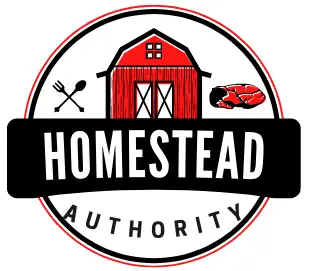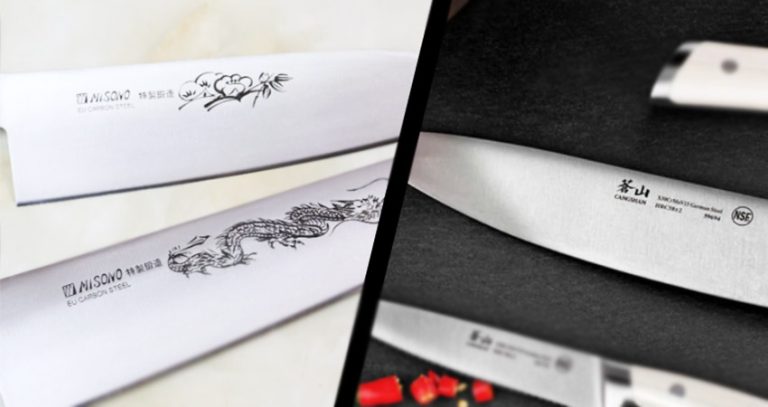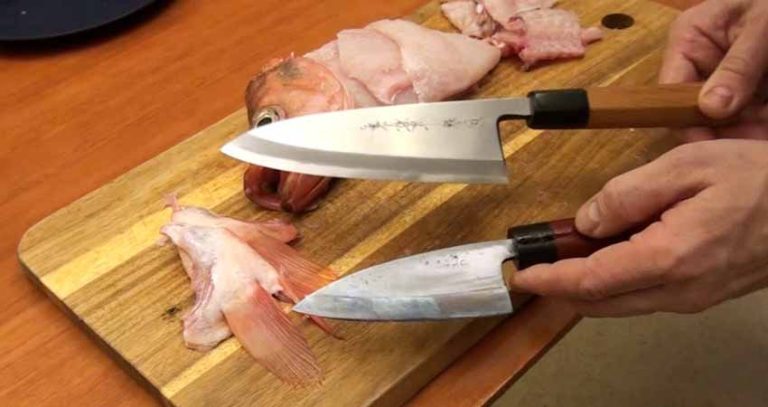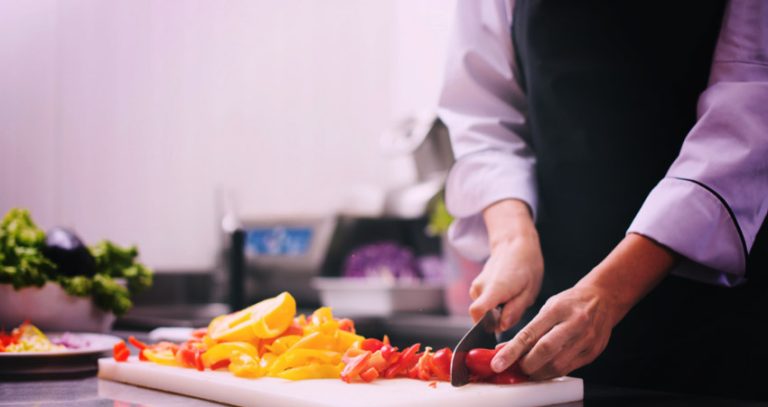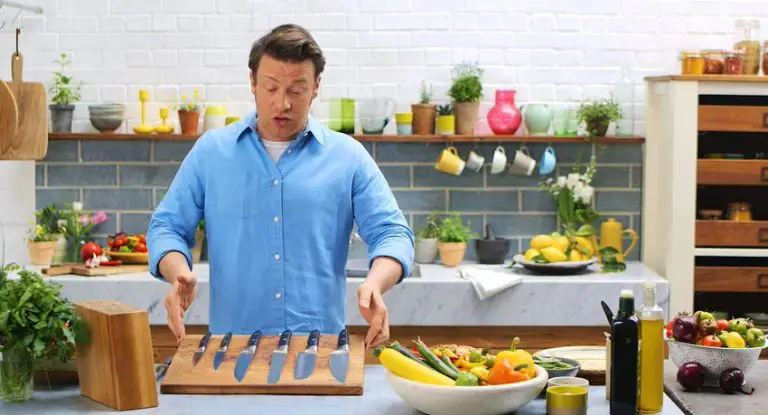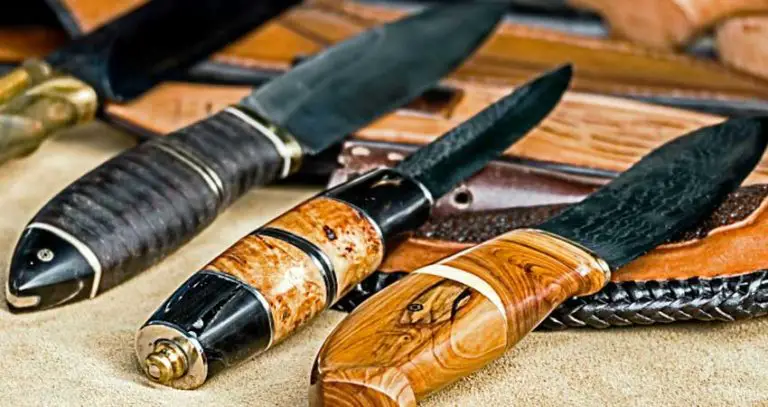What’s Better – Serrated Or Non-Serrated Knife?
As a home chef or cooking enthusiast, you cannot use both the Serrated and Non-Serrated knives together. While buying, it’s better to choose one which might come in handy in your daily work routine and save your time.
Now, a question pops up – what’s better, a Serrated or Non-Serrated knife?
Serrated and Non-Serrated knives have push and pull type advantages. Serrated blades got a tooth and jaw-like structure, whereas the Non-Serrated ones got the sharp plain edge.
The Non-Serrated knife is famous for cutting push cuts, for example, steaks. On the other hand, the Serrated blade is suitable for slicing cuts like loaves of bread.
Knowing about the different purposes uses, and specialties of the Serrated and Non-Serrated knife will help you pick the best one for you.
The Knife Basics
Before we roll into deeper details, let’s get to know about the Serrated and Non-Serrated knife first. It will help you learn more about using both types of knives.
Serrated Knife
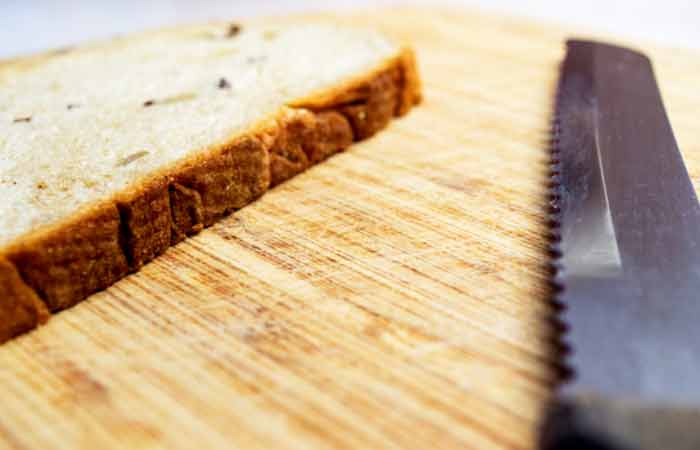
A Serrated knife has a unique design with some zig-zag or jagged cutting surface. It’s more like a tooth-type shape. These are built to work as a small saw with alternating motion.
The blades are made to cut through textured materials that are inflexible but cannot be crushed easily.
A Serrated knife that works well with bread, soft fruits, and cooked meats.
Non-Serrated Knife
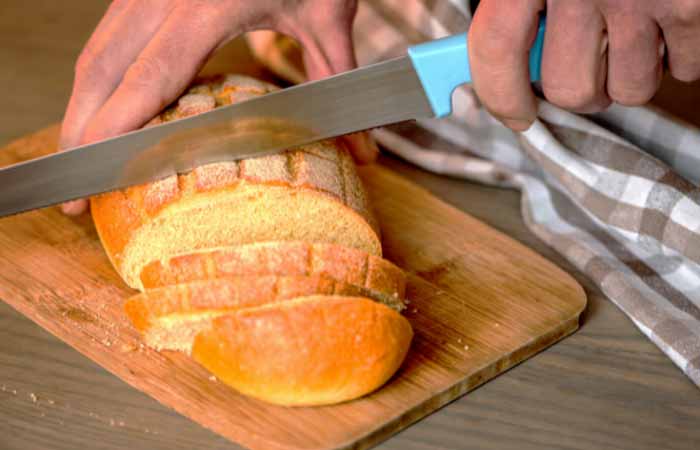
Also known as a plain-edge knife, this knife got one end with a sharp edge and is a bit more traditional. It gained popularity to serve a much broader purpose along with other tactical cuts.
The design of these knives has been improving for centuries to deliver the ultimate precision and control at different angles.
Serrated vs. Non-Serrated Knife
As you have already learned about Serrated and Non-Serrated knives, let us provide you with the pros and cons of both variants.
This will likely help you know more about them and reach a final decision about which one to choose.
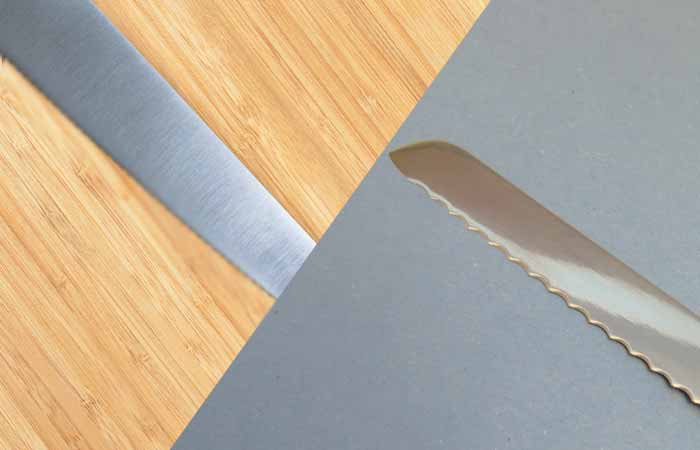
Sharpening
Sharpening is a significant characteristic of a knife.
Depending on your job, you can decide which one you will need.
● Serrated Knife
A serrated knife needs less sharpening than a non-serrated knife. The purpose or working demand is not like the straight edge knife. It has some downsides as well.
Though it needs less sharpening, it becomes difficult to sharpen the knife again when it becomes dull. This requires special sharpening equipment to get the job done.
Moreover, a serrated knife can easily cause unraveling while cutting ropes or fabrics.
● Non-Serrated Knife
On the other hand, we have the plain edge or Non-Serrated knife, which has a broader purpose of applications and has been improved throughout the centuries.
The advantage of a plain edge or Non-Serrated blade is that it doesn’t unravel. That is, it doesn’t fray the surface at the time of cutting rope or fabrics or cables. The edge makes a nice and tidy clean cut.
But the knife may slip while cutting on surfaces like plastics or any type of synthetic materials.
Compared to a serrated knife, sharpening the plain edge or non-serrated knife is way easier.
Cutting
The two types of blades are built for different purposes and use, making our day-to-day life work more manageable.
Before picking your knife, know the differences between Serrated and Non-Serrated knives in terms of cut.
● Push Cutting
For push cutting, the knife is used by alternating the force with the knife’s edge, for example, in cutting any vegetables.
Say, for tomato, while cutting it, you are applying pressure alternatingly to and forth with the edge of the knife. So, you must pick the Non-Serrated or plain edge knife for this type of cutting.
● Slicing
Now, another type of cutting is based on knives’ motion. This is called slicing.
For slicing, if you look deeply, you will find that it uses the knife for an alternating movement similar to a saw. This type of cutting is needed for the bread, steak, etc.
When it comes to a Serrated knife, it is excellent at slicing with alternating motion. Slicing generally uses the serrated edge to cut. The tooth-like structure of the Serrated knife helps to cut in this motion.
● Chopping
The last main cutting motion with a knife is chopping.
You will find that chopping is cutting with a unidirectional force if you look around. That is, the pressure is being applied in one way only. Typically, it happens in a downward direction.
In the case of chopping, it requires a polished edge that will be thick enough to allow the knife to cut without failing. It needs to be sufficiently thick and glossy to chop through something without breaking.
While chopping, you need to cut through them with a clean mark without damaging the surface. So, a Non-Serrated knife works best in this case.
Push cutting, slicing, and chopping are the three major cuts with knives. Here, each of them demands different types of edges in terms of cutting.
Later, when you cut any vegetables or fruits or any meat, think about your knife and choose wisely.
What About Partially Serrated Edge?
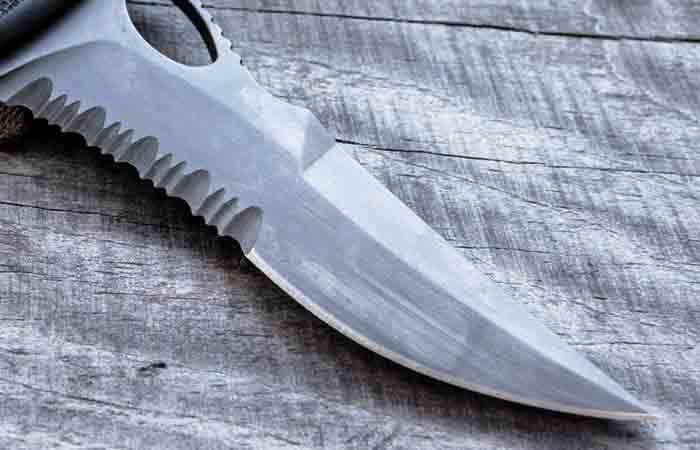
A third option is available besides serrated and non-serrated edges if a knife has multiple purposes of serving.
It is a partially serrated edge knife. This blade is a topic with a lot of debate, but still, it can be considered depending on its use.
A partially Serrated knife is a combination of a serrated and non-serrated knife. It starts with a saw-like tooth structure and ends with a plain edge.
Starting from positive aspects, you get a two-in-one package starting from positive aspects when you buy a partially Serrated knife.
The front end can be used for the push cut effectively, and the other is the serration part for the effective slicing tool.
Some may call this a compromise, while others say it is worth the money. The verdict totally depends upon the individual taste of choice.
FAQ
- Can the Serrated Blade be Sharpened?
Yes, a serrated knife can be sharpened by a professional. But it costs more than the Non-Serrated Knife.
- Which One Cuts Plain and Clean – Serrated or Non-Serrated Knife?
For a clean-cut, a Non-Serrated knife is the best choice. But for a tough cut, the serrated blade is good even though it needs proper maintenance.
- Which One Needs More Maintenance – Serrated or Non-Serrated knife?
A Serrated Knife needs more maintenance due to its jaw-like structure.
- Is a Partially Serrated Edge Knife Good?
There are lots of controversies out there about the usefulness of a Partially Serrated Knife. But it is a good choice if you have minimal use of both variants. The blade is also worth the money.
Final Verdict
As you are at the end, you must get a clear and practical idea about what’s better, a Serrated or Non-Serrated Knife?
Our discussion will help you visualize both blades and help you pick up the best one for you.
If your best use case is push cuts, you can carry a Non-Serrated plain knife. Otherwise, you can use the Serrated knife for the pull cuts like slicing or chopping.
But if you often need two, you can consider the partially serrated edge.
Choose your knife depending on what you are planning to do. It is a personal preference while choosing depending upon the edge type and usage.
